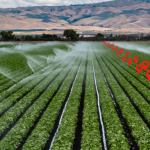
The Effect of Sourcing Logistics on Epidemiological Tracing
Outbreaks and recalls continue to happen year over year, and 2021 was no different. Over this past year, there have been over 30 separate Salmonella incidents linked to a variety of human and animal food products. Some of these outbreaks are ongoing still, with no source identified, while others have been pinpointed to commodities from specific brands, or in broad cases, affected regions.
When illnesses begin showing up and the pathogen of concern is identified, epidemiologists are tasked with using the tools at their disposal to identify the source as quickly as possible. Coordinating between state and clinical laboratories to identify affected patients, the epidemiologists employ surveys and questionnaires to look for common links such as foods eaten, grocery stores & restaurants visited, and any other overlap that may aide in identifying a source. Historically, due to testing limitations, identifying a source was a monumental task considering the time between when a patient was identified to the time they were surveyed, several weeks could have passed. Many people have trouble remembering what they ate a few days ago, let alone weeks, which meant common links were sometimes best guesses. Today, as lab results are returned much quicker, patients are interviewed sooner allowing for source identification. Coupled with advanced technologies such as Whole-Genome-Sequencing (WGS) which are now more widely accessible, shared strains are detected faster and outbreaks are identified much sooner than previously possible.
From an operational standpoint, this highlights a need for continual improvement and understanding of your product’s supply chain. Considering that broad level contamination of product can happen throughout the life of the product – under growing operations, during harvest, shipping, processing, re-packing, storage, and more – it is important to recognize how pathogens can enter the supply chain, and ultimately what that means for your product. Consider for a moment, a growing operation is certified under a GFSI-scheme, implements pre-harvest testing of their commodity and follows industry best practices regarding water source testing and irrigation. Those efforts, among others, are done first and foremost to prevent illness and release of contaminated product and secondly to protect their name and brand. Now consider that throughout the supply chain, this product is either co-mingled, or shipped alongside product from different operations. If one of those operations, including the distributing firm, was not as diligent in their auditing practices and/or environmental monitoring and testing practices, it is possible for contamination to occur and implicate a commodity group.
As the epidemiologists dig into their investigation and begin to see a possible common product consumed by the affected individuals, the trace-back looks into where the products were sold and continues as far as possible. There are times when distributors use limited suppliers making trace-back simpler and source implication easier. Other times, the investigators are faced with operations with much more convoluted supply chains and open market sourcing, meaning the best that can happen is to pinpoint a product from a specific region. This can be devastating to an industry and commodity group. It is common and ongoing to see commodities from designated regions implicated in outbreaks when unable to determine the full source of the contamination. Sometimes, the contamination does not persist and sources are not identified. Other times, WGS of clinical isolates is matched to environmental isolates of a growing or processing operation which helps regulators point the finger of the perceived issues. While limitations and challenges still exist with WGS, this tool remains a go-to for epidemiologists and government agencies to determine their path to follow.
Operations and firms exist to sell their product to their customers and no one benefits from contaminated product and destroyed brands. All too often, the blame rolls downhill and epidemiologists have to act on the available data. These challenges highlight how important it is to be aware of the supply chain in all directions. Sharing information related to risk mitigation and verification efforts bi-directionally through the chain can provide stronger transparency of the steps operations are taking to minimize broad recalls of product and help epidemiologists pinpoint the true source versus painting with broad strokes.
How Industry Players can utilize Azzule and PrimusLabs to Meet these Challenges Head-on
Understanding how epidemiologists track problems to the source is the first step. The next is understanding what risks your products face throughout your own supply chain so you can mitigate those risks in advance to prevent wrongly being implicated in a problem. It may be obvious to some to request food safety related data from your own suppliers, but it is likely less obvious that the same can be said for suppliers requesting data from their customers. When the function of your business is to sell your product, asking your customers for their data can seem counterintuitive. However, mechanisms exist to do just that, without jeopardizing the sale of your product. Think for a moment about how we all share financial information about ourselves before we are able to purchase a car or a home, even though we are the “customer”. These requests are reasonable when considering that the supplier is accepting risk that we may default on those loans. Credit checks, references, and bank statements all serve as documentation that we are a worthy “risk”.
The same is possible from a food safety standpoint. Auditing and testing occur throughout the supply chain and both can be used to measure current and ongoing adherence to agreed upon food safety practices, or measurement of “risk” of a future problem. Say, for example, that as a supplier, you expect your customers to be certified to a GFSI scheme, such as PrimusGFS. Does this mean just one of their facilities has to be certified? What if your product is going to be distributed through multiple packinghouses? Are those facilities current on their certification as well? Can you go deeper in that investigation by looking at their environmental testing program? Are there issues with persistent pathogen presence, or is the operation employing a seek-and-destroy philosophy to take appropriate corrective actions following a positive pathogen finding?
These questions can all be answered with Azzule and PrimusLabs. Combing through hundreds, or thousands, of pages of audits and lab results means additional labor, potential missed observations, and tedious record-keeping. With Azzule’s Supply Chain Program, users at all points in the chain can take advantage of both graphical and data-driven visualizations of the status of organizations with whom they have a relationship. Food safety data, including laboratory results, can be moved seamlessly forward and backward to demonstrate to customers and suppliers alike adherence to food safety protocols and ongoing verification efforts. Say goodbye to overstuffed binders and filing cabinets, and stop letting paperwork dictate your life. Azzule and PrimusLabs are here to help you promote your efforts among your current and potential supplier base, while helping you to make sure your product ends up in the best hands.
About the Author: Adam Hughes
“The Effect of Sourcing Logistics on Epidemiological Tracing”
Adam Hughes is Director of Microbiology for PrimusLabs and oversees PrimusLabs’ Microbiological Testing Laboratories. In addition to managing laboratory operations, Adam is involved with supporting customer efforts to understand their testing programs, and how to leverage their data in selling and purchasing throughout the supply chain. Find him on LinkedIn and contact him at Adam.Hughes@PrimusLabs.com.
Curious on how to leverage audit and laboratory testing simultaneously?
Get your whole food safety picture by scheduling a FREE demo with us today. Start now!
PrimusLabs Resources
Leverage Your Testing Data With The PrimusLabs App
Zones & Environmental Monitoring Programs
Environmental Monitoring Helping FSMA’s Preventative Control
Know Your Sample Points With PrimusLabs Rotations
Microbiological Analyses Available With PrimusLabs





